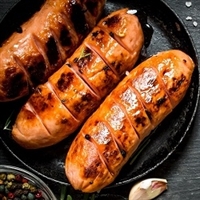 Camel Garlic Basil Sausage - 1 Lb.
Camel Garlic Basil Sausage - 1 Lb.
Camel Garlic Basil Sausage is made exclusively from 100% Camel Meat and Camel Hump Fat. Non-Cooked. No Beef. No Pork. 4 to 5 Links Per Lb. Camel Meat Tastes Delicious. I call it Camelicious!..... Anshu Pathak

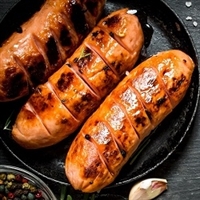 Elk Garlic Basil Sausage 1 Lb.
Elk Garlic Basil Sausage 1 Lb.
Elk Garlic Basil Sausage is made exclusively from 100% Elk Meat and Camel Hump Fat for flavor. The lean Elk Meat is double smoked for deep, rich flavor with our special blend of fresh California Garlic and Basil. Fully Cooked. No Pork. Heat and Serve.
Your online search for Elk Garlic Basil Sausage, Buy Elk Garlic Basil Sausage, Where can I buy Elk Garlic Basil Sausage, Elk Garlic Basil Sausage price, Elk Garlic Basil Sausage near me, Taste of Elk Garlic Basil Sausage, How to cook Elk Garlic Basil Sausage, Elk Garlic Basil Sausage online, Best Elk Garlic Basil Sausage, Elk Garlic Basil Sausage without pork, Pork free elk sausage, Elk Kielbasa Sausage, Elk Sweet Italian Sausage, Elk Hot Italian Sausage, Elk Greek Sausage, Elk Cajun Sausage, Elk Chipotle Chili Sausage and Elk Sausage with Madera Wine ends here.

 Venison Garlic Basil Sausage - 1 Lb.
Venison Garlic Basil Sausage - 1 Lb.
Venison Garlic Basil Sausage is made exclusively from 100% Venison Meat and Camel Hump Fat for flavor. The lean Venison Meat is double smoked for deep, rich flavor with our special blend of fresh California Garlic and Basil. Fully Cooked. No Pork. Heat and Serve.
Your online search for Venison Garlic Basil Sausage, Buy Venison Garlic Basil Sausage, Where can I buy Venison Garlic Basil Sausage, Venison Garlic Basil Sausage price, Venison Garlic Basil Sausage near me, Taste of Venison Garlic Basil Sausage, How to cook Venison Garlic Basil Sausage, Venison Garlic Basil Sausage online, Best Venison Garlic Basil Sausage, Venison Garlic Basil Sausage without pork, Pork free Venison sausage, Venison Kielbasa Sausage, Venison Sweet Italian Sausage, Venison Hot Italian Sausage, Venison Greek Sausage, Venison Cajun Sausage, Venison Chipotle Chili Sausage and Venison Sausage with Madera Wine ends here.

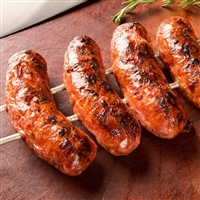 Camelicious Camel Cajun Sausage - 16 oz.
Camelicious Camel Cajun Sausage - 16 oz.
Our Camelicious Camel Cajun Sausage is made exclusively from Camel Meat,Camel Fat and Camel Milk Powder. All our Camelicious Sausages are 100% Halal. No Beef. No Pork. Laissez les bons temps rouler! Add some gourmet Cajun kick to your jambalaya, gumbo or even a plain old bun. The lean Camel Meat is double smoked for deep, rich flavor and our special Creole spice blend welcomes the taste of Louisiana to your plate. Fully Cooked. Ready to heat and serve. Camel Meat tastes Delicious. I call it Camelicious!.....Anshu Pathak

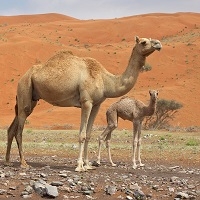 Camelicious Camel Ground Meat - 1 Lb.
Camelicious Camel Ground Meat - 1 Lb.
Exotic Meat Market offers Wild Camel Meat imported from Australia. No Antibiotics. No Hormones. Our Camel Ground Meat is delicious, and full of flavor. This package contains one pound of Camel Ground Meat. Camel Meat sound exotic, but camel meat is national food and it’s popular in the whole Gulf. Camel tastes delicious. Camel meat is more tender when the camel is slaughtered at a young age. Camel Milk is healthy as it contains less cholesterol and more beneficial minerals than ordinary cow's milk. Exotic Meat Market offers Camel Meat imported from Australia. Camel is Halal slaughtered in Australia.
Your search for camel ground meat, buy camel ground meat, camel ground meat price, camel ground meat near me, how to cook camel ground meat, camel ground meat online, camel ground meat recipe, taste of camel ground meat, camel ground meat nutrition, Fresh camel ground meat, frozen camel ground meat, camel ground meat distributor, camel ground meat importer and more ends here.

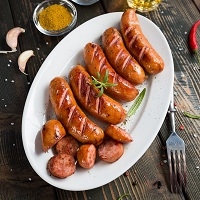 Venison Garlic Basil Sausage - 1 Lb.
Venison Garlic Basil Sausage - 1 Lb.
Venison Garlic Basil Sausage is made exclusively from 100% Venison Meat and Camel Hump Fat for flavor. The lean Venison Meat is double smoked for deep, rich flavor with our special blend of fresh California Garlic and Basil. Fully Cooked. No Pork. Heat and Serve.
Your online search for Venison Garlic Basil Sausage, Buy Venison Garlic Basil Sausage, Where can I buy Venison Garlic Basil Sausage, Venison Garlic Basil Sausage price, Venison Garlic Basil Sausage near me, Taste of Venison Garlic Basil Sausage, How to cook Venison Garlic Basil Sausage, Venison Garlic Basil Sausage online, Best Venison Garlic Basil Sausage, Venison Garlic Basil Sausage without pork, Pork free Venison sausage, Venison Kielbasa Sausage, Venison Sweet Italian Sausage, Venison Hot Italian Sausage, Venison Greek Sausage, Venison Cajun Sausage, Venison Chipotle Chili Sausage and Venison Sausage with Madera Wine ends here.

 Elk Salami - 12 Oz.
Elk Salami - 12 Oz.
Exotic Meat Market offers ELK Salami made from Elk Meat. No Beef or Pork Added to make our Elk Salami. Camel hump fat added for flavor.
What is Salami? Salami is a type of cured sausage consisting of fermented and air-dried meat, typically beef or pork. Historically, salami was popular among southern and central European peasants because it stores at room temperature for up to 40 days once cut, supplementing a potentially meager or inconsistent supply of fresh meat. Countries and regions across Europe make their own traditional varieties of salami.
The word salami in English comes from the plural form of the Italian salame. It is a singular or plural word in English for cured meats of a European (particularly Italian) style. In Romanian, Bulgarian, and Turkish, the word is salam; in Hungarian, it is szalámi; while Spanish, French, German, and Dutch, have the same word as English. The name may be derived from the Latin words "salsiccia" and "salumen". The word originates from the word sale (salt) with a termination (ame) that in Italian indicates a collective noun. Thus, it originally meant "all kinds of salted (meats)". The Italian tradition of cured meats includes several styles, and the word salame soon specifically meant only the most popular kind—a salted and spiced meat, ground and extruded into an elongated, thin casing (usually cleaned animal intestine), then left to undergo natural fermentation for days, months, or even years.
The concept of fermentation—allowing beneficial or benign organisms to grow in food to prevent destructive or toxic ones from growing—especially with meat, has been around for thousands of years. This is evident in the presence of various types of sausages found globally. As well, environmental conditions dictate what food processes are used, as seen in the Mediterranean and southern Europe where "meat products are dried to lower water activity (Aw) values, taking advantage of the long dry and sunny days, while in northern Europe, fermented sausages require smoking for further preservation. In Europe, the main countries that produce salami are France, Germany, Hungary, Italy, and Spain, which make "several of hundred million kg per year.
Worldwide, there are many different versions of sausage, each with its own cultural and flavor profiles. Additionally, each sausage has its own type of seasonings and amount of salt, making each flavor and texture unique. This wide array of fermented sausages, especially in terms of salami, shows its ubiquitous but exclusive nature. For example, due to immigration to North America, European settlers brought many traditions, including fermented meats such as bologna or pepperoni. Similar types of sausages are found in the Middle East, where various meats like beef, lamb, and mutton are used; or in China, where "lap cheong" (translated as "waxed intestines") are usually pork. Likewise, in eastern Europe, Hungarian salami is quite popular. Hungarian salami is "intensively smoked, and then its surface is inoculated with mold starters or spontaneous mold growth.
Traditional salami, with its typical marbled appearance, is made from beef or pork (sometimes specifically veal). Beef is usual in halal and kosher salami, which never include pork for religious reasons. Makers also use other meats, including venison and poultry (mostly turkey). Goose salami is traditional in parts of Northern Italy. Salami has also been made from horse meat. In the Provence region of France, donkey meat is used for salami as well, the product being sold in street markets. Typical additional ingredients include:
Garlic Minced fat Salt Spices, usually white pepper Various herbs Vinegar Wine
The maker usually ferments the raw meat mixture for a day, then stuffs it into either an edible natural or inedible cellulose casing, and hangs it up to cure. Some recipes apply heat to about 40 °C (104 °F) to accelerate fermentation and drying. Higher temperatures (about 60 °C (140 °F)) stop the fermentation when the salami reaches the desired pH, but the product is not fully cooked (75 °C (167 °F) or higher). Makers often treat the casings with an edible mold (Penicillium) culture. The mold imparts flavor, helps the drying process, and helps prevent spoilage during curing.
Salami varieties include:
Cacciatore (cacciatora, cacciatorini) "hunter" salami, Italy Chorizo, also spicy Iberian variant Ciauscolo, typical of Marche Fegatelli Felino, province of Parma Finocchiona, typical of southern Tuscany Genovese German salami Hard Kulen spicy salami characteristic for Slavonia, Vojvodina, and parts of Baranya Lardo Napoletano, Napoli Milanese, Milano 'Nduja Pepperoni Saucisson sec (French "dry sausage") Soppressata, typical of Calabria Spegepølse (Danish, means salted and dried sausage) Vysočina Winter salami (Hungarian téliszalámi)
Many Old World salami are named after their region or country of origin—such as Arles, Genoa, Hungarian, and Milano salami. Many are flavored with garlic. Some types—including some varieties from Spain (salchichón), Hungary (pick salami), and Italy (such as Neapolitan varieties that led to American pepperoni) include paprika or chili powder. Varieties also differ by coarseness or fineness of the chopped meat and size and style of the casing.
Though completely uncooked, salami is not raw, but cured. Salame cotto—typical of the Piedmont region in Italy—is cooked or smoked before or after curing to impart a specific flavor but not for any benefit of cooking. Before cooking, a cotto salame is considered raw and not ready to eat. Three major stages are involved in the production of salami: preparation of raw materials, fermentation and ripening and drying. Any minor differences in the formulation of the meat or production techniques could give rise to the various kinds of salami across different countries.
Before fermentation, raw meat (usually pork or beef depending on the type of salami that is produced) is milled and mixed with other ingredients such as salt, sugar, spices, and yeast, and, if the particular salami variety requires it, bacterial starter culture. They are then inlaid into their casings with the desired size. To achieve the flavor and texture that salami possesses, fermentation, which can also be referred to as a slow acidification process promoting a series of chemical reactions in the meat, has to take place. Direct acidification of meat was found to be inappropriate for salami production since it causes protein denaturation and an uneven coagulation thereby causing an undesirable texture in the salami. For a more modern controlled fermentation, makers hang the salami in warm humid conditions for one to three days to encourage the fermenting bacteria to grow, then hang it in a cool, humid environment to slowly dry. In a traditional process, the maker skips the fermentation step and immediately hangs the salami in a cool, humid curing environment. Added sugars (usually dextrose) provide a food source for the curing bacteria.
The bacteria produce lactic acid as a waste product, which lowers the pH and coagulates the proteins, reducing the meat's water-holding capacity. The bacteria-produced acid makes the meat an inhospitable environment for pathogenic bacteria and imparts a tangy flavor that distinguishes salami from machine-dried pork. Salami flavor relies as much on how these bacteria are cultivated as it does on the quality and variety of the other ingredients. Originally, makers introduced wine into the mix, favoring the growth of other beneficial bacteria. Now, they use starter cultures.
The climate of the curing environment and casing size and style determine the drying and curing process. According to the variety of salami, different fermentation methods involving different acids are explored in order to create various colors and flavors. Starter cultures such as lactic acid bacteria (LAB) and coagulase-negative cocci (CNC) are most commonly used in salami production. More species of LAB and CNC were discovered during the last decades and they were found to have different fermentation temperatures with variable rates of acidification. Even though these bacteria can help maintain a longer shelf life for meat products and even retard the growth of pathogens, there are a few studies that argue some starter cultures may be related to the production of enterotoxins or biogenic amines that can be harmful to the human body. Therefore, starter cultures have to be carefully selected by producers and properly used in fermentation.
After fermentation, the sausage must be dried. This change the casings from water-permeable to reasonably airtight. A white covering of either mold or flour helps prevent photo-oxidation of the meat and rancidity in the fat. Ripening and drying happens after fermentation. This stage causes the main physical and microbial changes through the large amount of water loss. About half of the water is evaporated and further water loss must be prevented by packaging. Nonuniform drying processes could cause the formation of a hard shell on the surface of salami. This is like other food products such as fruits that undergo dehydration to prevent water removal from inside which would increase the risk of diseases or spoilage-causing microbial growth. In modern manufacturing temperature and relative humidity are strictly controlled according to the size of salami. Nitrates or nitrites are added to provide the cured meat color and inhibit growth of harmful bacteria from the genus Clostridium. Salt, acidity, nitrate/nitrite levels, and dryness of the fully cured salami combine to make the uncooked meat safe to consume. High quality, fresh ingredients are important to helping prevent deadly microorganisms and toxins from developing.
Salami is homogeneous in appearance and highly ductile. Its quality is dependent on the quality of the raw materials and the level of technology used in its production. The aroma and taste of salami are developed by enzymatic and non-enzymatic reactions. The characteristic fermented meat flavor is believed to be developed by a combination of endogenous enzymatic activities and the lactic acid produced by the starter culture. Lactic acid bacteria develop the tangy flavor of salami through the fermentation of carbohydrates and produces an appealing red color to the meat after fermentation, while coagulase-negative cocci can catabolize amino acid and fatty acid to produce volatile compounds. The flavor itself consists of odor properties, which comes from volatile substances, and taste and tactile properties, which comes from non-volatile substances that are a result of enhancers and synergists.
When smoke is applied to salami, it also affects the taste, smell, appearance, and texture. Some of these changes are due to the formation of phenolic compounds, which slow fat oxidation. The pyrolysis of cellulose and hemicelluloses in the salami casing produces carbonyls, which develop the color of the meat.
More than 400 volatile compounds have been identified in different types of dry-fermented sausages. For example, the organic compounds identified in Hungarian salami produced the dominant flavors of smokiness, sweetness, pungency, sourness, and cloves; secondary flavors included cooked meat, cheese, popcorn, cooked potato, mushroom, seasoning, phenols, roasting, sulfur, and sweatiness. Some minor flavors included malt, garlic, fruit, pine, grass, citrus, honey, caramel, and vanilla. The overall smoky note is the result of numerous phenols. Whether these odorants are formed in the salami or simply transferred from the raw materials during manufacturing is unknown; systematic studies have yet to compare the odorants present in the raw materials to those in the final product.
Salami will remain stable for long periods of time, as it has a low water activity and contains preservatives, colorings, flavorings, antioxidants and acidifying cultures. Semi-ripened salami will maintain its flavor for long periods of time under retail display conditions, but it will eventually deteriorate due to the development of incipient rancidity. The shelf life of salami is mainly determined by sensory deterioration, which is the result of various oxidation phenomena; pathogenic or spoilage bacteria do not readily proliferate in dry-cured sausage. The main cause of flavor deterioration in dry-cured sausage is rancidity, though the possible formation of other off-flavors, such as moldy, acid, putrid or pungent traits, may contribute to the decreased eating quality.
The use of coriander essential oil in salami has been shown to increase the higher synthetic antioxidant effect of butylated hydroxytoluene, which delays lipid oxidation and the rancid aroma and taste that come with it. Additionally, salami with coriander essential oil shows improvements in the sensory attributes of taste, odor, texture, brightness, and red color intensity.
Salami is a raw fermented sausage consisting of raw comminuted pork and/or beef meat, fat, and additives, such as curing salt, spices, sugar, and a starter culture. There are multiple different types of Salami meat in various markets around the world. In northern and central Europe, smoked salamis are preferred, and ripening is controlled by the addition of lactic acid-producing starter cultures, whereas in southern Europe, salami is slowly air-dried and mostly mold-ripened.[20] Therefore, different preservation and drying methods are used around the world to prepare salami.
Hungarian-type salami is a specialty in salami production, because it is first slightly smoked and mold-ripened afterward. The salami that is of Hungarian origin, the so-called "Hungarian Winter salami", is made of raw pork, bacon, salt, spices, sugars, and sodium nitrite. Szegedi téliszalámi (winter salami) is made of Mangalitsa pork breed, with horse large intestine used as its casing to preserve and serve it. This type acquires a grey mold cover on it and has a firm texture and excellent keeping quality after a 30% weight loss reached in 3 to 4 months. Hungarian salami is one of the world's two trade names for salami, Milano salami being the other. These fermented sausages combine smoke and mold application in one. The traditional technology used to produce them is based on the Italian pre-drying technique developed during the nineteenth century, but they are smoked and their pH does not drop below 5.5, so the final flavor of the product is not acidic.
Dry fermented sausage is an important product of the Greek meat industry with an annual production of about 10 000 tons. Its manufacture varies depending on the skill and experience of the meat manufacturer rather than a process solely based on scientific and technological means of production. This type of traditional sausage, which undergoes an adventitious fermentation, is of superior quality compared to those inoculated with starters and made in industrial scale. The quality of this type of traditional salami is often more expensive due to its high quality.
Naples-type salami is also a popular Southern Italian dry fermented sausage made of coarsely minced pork meat. In Northeast Italy, traditional dry fermented salami sausages made of fresh pork display unique organoleptic sensory profiles characterized by accented acidity, slight sourness, and elastic semi hard consistency. Other popular dry salamis in Italy are mainly made from a combination of pork and small bits of beef, seasoned with garlic; pepperoni is also made of pork and beef, and is usually smoked; and chorizo is highly spiced and smoked in comparison.
In central Europe, Germany, there is Westphalian salami. It is made with fast technology from pork meat, pepper, garlic, and sometimes mustard seeds, is a smoked, firm, sliceable product with a distinct fermentation/sour flavor. The sausages are stuffed into large-diameter casings and ripened by lowering the temperature room 24 °C to 12–14 °C until a water loss of 25% is obtained. In the Netherlands, the most popular Dutch products are finely chopped salami, Cervelat, Snijworst (with high fat content and rind added), Boerenmetworst (which is coarsely chopped), and chorizo (which is less spicy than the Spanish product). In Russia, typical products are Moscow-type and Russian-type salamis made from pork and beef meat. A feature of Moscow- type salami is the large size of fat particles (7–8mm) that give the sausage a rough cover.
There are many aspects of salami that can be considered both detrimental and positive to human health. Salami has been found to be a possible allergen to some people due to the use of penicillium species mold starter during the drying and curing portion of processing to add flavor and stop growth of undesirable molds. These molds occur predominantly in the skin of salami. Fermented pork back fat that is used to make salami has very high saturated fatty acid and cholesterol content, which can increase the risk of heart disease and pancreatitis. However, it has been shown that it is possible to replace the pork back fat in salami with extra virgin olive oil thereby changing the fatty acid profile of the salami. Olive oil consists of a much larger amount of monounsaturated and polyunsaturated fatty acids, which allows this substitution to create a healthier product. Salami is considered slightly acidic due to lactic acid that is present. In salami where the pork back fat was substituted for extra virgin olive oil, it has shown to have a lower pH of around 5.00 compared to its original levels of around 6.35 to 6.55 making the salami more acidic. These lower pH levels are healthier for humans as higher populations of lactic acid bacteria inhibit the spread of spoilage microorganisms.
There have also been cases that have highlighted some of the possible health dangers of salami. An outbreak of Escherichia coli O157 infection of a husband and wife was traced back to the consumption of dry fermented salami made with pork meat after the couple was hospitalized for bloody diarrhea. There was also an outbreak of E. coli O157 in 1994 with 17 cases all occurring from the consumption of pre-sliced salami that was processed by one company. A research investigation of the factory where the salami was processed found that all processing techniques and production methods complied with all regulations and there was no evidence of contamination after processing.
Preservation of any meat products is important. Some fungi can create undesirable color and flavor to the contaminated meat and produce toxins. There are also fungi which are not harmful to humans such as those that are formed on the surface of dried salami which are an indication of maturation after ripening. Thus, producers have to eliminate fungi that have potential risks to human health. As natural preservatives are becoming more desirable food additives than artificial preservatives in food industries, some studies about salami have been focusing on the utilization of essential oils such as oregano and clove oil as preservatives that can be applied to salami production due to their anti-fungal activities.[29] Several types of oils including rosemary, clove, oregano and sage oils were found to have different levels of inhibition effect to various types of fungi that could possibly grow on salami. Since several of these oils contain volatile compounds whose amount can affect the flavor of the food, researchers often perform a sensory test to find the amount of the oil that can best serve as an anti-fungal preservative but have the least effect on the flavor or appearance of the salami.

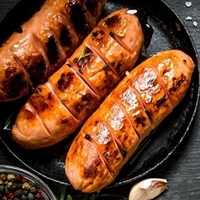 Camel Garlic Basil Sausage - 2 Lbs.
Camel Garlic Basil Sausage - 2 Lbs.
Camel Garlic Basil Sausage is made exclusively from 100% Camel Meat and Camel Hump Fat. The lean Camel Meat is double smoked for deep, rich flavor and our special blend of fresh garlic and basil. Fully Cooked. No Pork.
Camel Garlic Basil Sausage is fully cooked. Smoked. Heat and Serve. 5 Links Per Lb. Camel Meat tastes Delicious. I call it Camelicious!.....Anshu Pathak

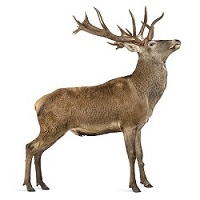 Venison Garlic Basil Sausage - 2 Lbs.
Venison Garlic Basil Sausage - 2 Lbs.
Venison Garlic Basil Sausage is made exclusively from 100% Venison Meat and Camel Hump Fat for flavor. The lean Venison Meat is double smoked for deep, rich flavor with our special blend of fresh California Garlic and Basil. Fully Cooked. No Pork. Heat and Serve.
Your online search for Venison Garlic Basil Sausage, Buy Venison Garlic Basil Sausage, Where can I buy Venison Garlic Basil Sausage, Venison Garlic Basil Sausage price, Venison Garlic Basil Sausage near me, Taste of Venison Garlic Basil Sausage, How to cook Venison Garlic Basil Sausage, Venison Garlic Basil Sausage online, Best Venison Garlic Basil Sausage, Venison Garlic Basil Sausage without pork, Pork free Venison sausage, Venison Kielbasa Sausage, Venison Sweet Italian Sausage, Venison Hot Italian Sausage, Venison Greek Sausage, Venison Cajun Sausage, Venison Chipotle Chili Sausage and Venison Sausage with Madera Wine ends here.

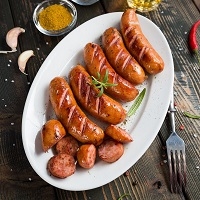 Venison Garlic Basil Sausage - 2 Lbs
Venison Garlic Basil Sausage - 2 Lbs
Venison Garlic Basil Sausage is made exclusively from 100% Venison Meat and Camel Hump Fat for flavor. The lean Venison Meat is double smoked for deep, rich flavor with our special blend of fresh California Garlic and Basil. Fully Cooked. No Pork. Heat and Serve.
Your online search for Venison Garlic Basil Sausage, Buy Venison Garlic Basil Sausage, Where can I buy Venison Garlic Basil Sausage, Venison Garlic Basil Sausage price, Venison Garlic Basil Sausage near me, Taste of Venison Garlic Basil Sausage, How to cook Venison Garlic Basil Sausage, Venison Garlic Basil Sausage online, Best Venison Garlic Basil Sausage, Venison Garlic Basil Sausage without pork, Pork free Venison sausage, Venison Kielbasa Sausage, Venison Sweet Italian Sausage, Venison Hot Italian Sausage, Venison Greek Sausage, Venison Cajun Sausage, Venison Chipotle Chili Sausage and Venison Sausage with Madera Wine ends here.

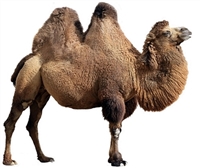 Camel Liver - 1 lb.
Camel Liver - 1 lb.
Camel Liver is the most nutrient-dense organ meat. It is a powerful vitamin A. Vitamin A is beneficial for eye health and reduces diseases that cause inflammation, including Alzheimer’s and arthritis. Camel Liver also contains folic acid, iron, chromium, copper, and zinc and is known to be particularly good for the heart and increasing hemoglobin levels in the blood.
Looking for Camel Liver, Camel Liver for sale, Halal Camel Liver, Camel Liver near me, How to cook Camel Liver, Camel Liver Price, Camel Liver retail price, Camel Liver wholesale price, Where can I buy Camel Liver, Camel Liver recipe, Camel Liver recipes, Camel Liver taste, Buy Camel Liver, Purchase Camel Liver, How to cook Camel Liver and more?

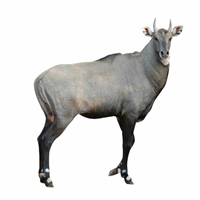 Antelope Bratwurst Sausage - 2 Lbs.
Antelope Bratwurst Sausage - 2 Lbs.
Exotic Meat Market offers Nilgai Antelope Meat. Nilgai,
also called bluebuck, the largest Asian antelope. The nilgai is indigenous to
the Indian subcontinent. Accordingly, the nilgai is the only one of the four
Indian antelopes that are still abundant.
Nilgai Meat is red, sweet, and lean. Nilgai Meat is
more healthful and flavorful because it is truly grass-fed or brush fed meat. They’re
not eating grain out there in the wild. Our Antelope Bratwurst Sausage is made
exclusively from Antelope Meat and Camel Hump Fat.
The name Bratwurst comes from the Old High German
Brätwurst, from brät-, finely chopped meat, and Wurst = sausage. Bratwurst,
often shortened to "brat" in American English, is a common type of
sausage in the United States, especially in the state of Wisconsin, where the
largest ancestry group is German. Originally brought to North America by German
immigrants, it is a common sight at summer cookouts, alongside the more famous
hot dog. Every year, during the Memorial Day weekend, the city of Madison,
Wisconsin hosts the Brat Fest, which is known as the "world's largest
bratwurst festival." The town of Bucyrus, Ohio (which calls itself the
"Bratwurst Capital of America") has held the three-day Bucyrus
Bratwurst Festival annually since 1967.
Our Wild Antelope Meat comes from Texas, USA.
Enjoy.
Anshu

 Antelope Salami - 12 Oz.
Antelope Salami - 12 Oz.
Exotic Meat Market offers ANTELOPE Salami made from American ANTELOPE Meat. No Beef or Pork Added to make our ANTELOPE Salami. CAMEL FAT ADDED FOR FLAVOR. What is Salami? Salami is a type of cured sausage consisting of fermented and air-dried meat, typically beef or pork. Historically, salami was popular among southern and central European peasants because it stores at room temperature for up to 40 days once cut, supplementing a potentially meager or inconsistent supply of fresh meat. Countries and regions across Europe make their own traditional varieties of salami. The word salami in English comes from the plural form of the Italian salame. It is a singular or plural word in English for cured meats of a European (particularly Italian) style. In Romanian, Bulgarian, and Turkish, the word is salam; in Hungarian, it is szalámi; while Spanish, French, German, and Dutch, have the same word as English. The name may be derived from the Latin words "salsiccia" and "salumen". The word originates from the word sale (salt) with a termination (ame) that in Italian indicates a collective noun. Thus, it originally meant "all kinds of salted (meats)". The Italian tradition of cured meats includes several styles, and the word salame soon specifically meant only the most popular kind—a salted and spiced meat, ground and extruded into an elongated, thin casing (usually cleaned animal intestine), then left to undergo natural fermentation for days, months, or even years. The concept of fermentation—allowing beneficial or benign organisms to grow in food to prevent destructive or toxic ones from growing—especially with meat, has been around for thousands of years. This is evident in the presence of various types of sausages found globally. As well, environmental conditions dictate what food processes are used, as seen in the Mediterranean and southern Europe where "meat products are dried to lower water activity (Aw) values, taking advantage of the long dry and sunny days, while in northern Europe, fermented sausages require smoking for further preservation. In Europe, the main countries that produce salami are France, Germany, Hungary, Italy, and Spain, which make "several of hundred million kg per year. Worldwide, there are many different versions of sausage, each with its own cultural and flavor profiles. Additionally, each sausage has its own type of seasonings and amount of salt, making each flavor and texture unique. This wide array of fermented sausages, especially in terms of salami, shows its ubiquitous but exclusive nature. For example, due to immigration to North America, European settlers brought many traditions, including fermented meats such as bologna or pepperoni. Similar types of sausages are found in the Middle East, where various meats like beef, lamb, and mutton are used; or in China, where "lap cheong" (translated as "waxed intestines") are usually pork. Likewise, in eastern Europe, Hungarian salami is quite popular. Hungarian salami is "intensively smoked, and then its surface is inoculated with mold starters or spontaneous mold growth. Traditional salami, with its typical marbled appearance, is made from beef or pork (sometimes specifically veal). Beef is usual in halal and kosher salami, which never include pork for religious reasons. Makers also use other meats, including venison and poultry (mostly turkey). Goose salami is traditional in parts of Northern Italy. Salami has also been made from horse meat. In the Provence region of France, donkey meat is used for salami as well, the product being sold in street markets. Typical additional ingredients include: Garlic Minced fat Salt Spices, usually white pepper Various herbs Vinegar Wine The maker usually ferments the raw meat mixture for a day, then stuffs it into either an edible natural or inedible cellulose casing, and hangs it up to cure. Some recipes apply heat to about 40 °C (104 °F) to accelerate fermentation and drying. Higher temperatures (about 60 °C (140 °F)) stop the fermentation when the salami reaches the desired pH, but the product is not fully cooked (75 °C (167 °F) or higher). Makers often treat the casings with an edible mold (Penicillium) culture. The mold imparts flavor, helps the drying process, and helps prevent spoilage during curing. Salami varieties include: Cacciatore (cacciatora, cacciatorini) "hunter" salami, Italy Chorizo, also spicy Iberian variant Ciauscolo, typical of Marche Fegatelli Felino, province of Parma Finocchiona, typical of southern Tuscany Genovese German salami Hard Kulen spicy salami characteristic for Slavonia, Vojvodina, and parts of Baranya Lardo Napoletano, Napoli Milanese, Milano 'Nduja Pepperoni Saucisson sec (French "dry sausage") Soppressata, typical of Calabria Spegepølse (Danish, means salted and dried sausage) Vysočina Winter salami (Hungarian téliszalámi) Many Old World salami are named after their region or country of origin—such as Arles, Genoa, Hungarian, and Milano salami. Many are flavored with garlic. Some types—including some varieties from Spain (salchichón), Hungary (pick salami), and Italy (such as Neapolitan varieties that led to American pepperoni) include paprika or chili powder. Varieties also differ by coarseness or fineness of the chopped meat and size and style of the casing. Though completely uncooked, salami is not raw, but cured. Salame cotto—typical of the Piedmont region in Italy—is cooked or smoked before or after curing to impart a specific flavor but not for any benefit of cooking. Before cooking, a cotto salame is considered raw and not ready to eat. Three major stages are involved in the production of salami: preparation of raw materials, fermentation and ripening and drying. Any minor differences in the formulation of the meat or production techniques could give rise to the various kinds of salami across different countries. Before fermentation, raw meat (usually pork or beef depending on the type of salami that is produced) is milled and mixed with other ingredients such as salt, sugar, spices, and yeast, and, if the particular salami variety requires it, bacterial starter culture. They are then inlaid into their casings with the desired size. To achieve the flavor and texture that salami possesses, fermentation, which can also be referred to as a slow acidification process promoting a series of chemical reactions in the meat, has to take place. Direct acidification of meat was found to be inappropriate for salami production since it causes protein denaturation and an uneven coagulation thereby causing an undesirable texture in the salami. For a more modern controlled fermentation, makers hang the salami in warm humid conditions for one to three days to encourage the fermenting bacteria to grow, then hang it in a cool, humid environment to slowly dry. In a traditional process, the maker skips the fermentation step and immediately hangs the salami in a cool, humid curing environment. Added sugars (usually dextrose) provide a food source for the curing bacteria. The bacteria produce lactic acid as a waste product, which lowers the pH and coagulates the proteins, reducing the meat's water-holding capacity. The bacteria-produced acid makes the meat an inhospitable environment for pathogenic bacteria and imparts a tangy flavor that distinguishes salami from machine-dried pork. Salami flavor relies as much on how these bacteria are cultivated as it does on the quality and variety of the other ingredients. Originally, makers introduced wine into the mix, favoring the growth of other beneficial bacteria. Now, they use starter cultures. The climate of the curing environment and casing size and style determine the drying and curing process. According to the variety of salami, different fermentation methods involving different acids are explored in order to create various colors and flavors. Starter cultures such as lactic acid bacteria (LAB) and coagulase-negative cocci (CNC) are most commonly used in salami production. More species of LAB and CNC were discovered during the last decades and they were found to have different fermentation temperatures with variable rates of acidification. Even though these bacteria can help maintain a longer shelf life for meat products and even retard the growth of pathogens, there are a few studies that argue some starter cultures may be related to the production of enterotoxins or biogenic amines that can be harmful to the human body. Therefore, starter cultures have to be carefully selected by producers and properly used in fermentation. After fermentation, the sausage must be dried. This change the casings from water-permeable to reasonably airtight. A white covering of either mold or flour helps prevent photo-oxidation of the meat and rancidity in the fat. Ripening and drying happens after fermentation. This stage causes the main physical and microbial changes through the large amount of water loss. About half of the water is evaporated and further water loss must be prevented by packaging. Nonuniform drying processes could cause the formation of a hard shell on the surface of salami. This is like other food products such as fruits that undergo dehydration to prevent water removal from inside which would increase the risk of diseases or spoilage-causing microbial growth. In modern manufacturing temperature and relative humidity are strictly controlled according to the size of salami. Nitrates or nitrites are added to provide the cured meat color and inhibit growth of harmful bacteria from the genus Clostridium. Salt, acidity, nitrate/nitrite levels, and dryness of the fully cured salami combine to make the uncooked meat safe to consume. High quality, fresh ingredients are important to helping prevent deadly microorganisms and toxins from developing. Salami is homogeneous in appearance and highly ductile. Its quality is dependent on the quality of the raw materials and the level of technology used in its production. The aroma and taste of salami are developed by enzymatic and non-enzymatic reactions. The characteristic fermented meat flavor is believed to be developed by a combination of endogenous enzymatic activities and the lactic acid produced by the starter culture. Lactic acid bacteria develop the tangy flavor of salami through the fermentation of carbohydrates and produces an appealing red color to the meat after fermentation, while coagulase-negative cocci can catabolize amino acid and fatty acid to produce volatile compounds. The flavor itself consists of odor properties, which comes from volatile substances, and taste and tactile properties, which comes from non-volatile substances that are a result of enhancers and synergists. When smoke is applied to salami, it also affects the taste, smell, appearance, and texture. Some of these changes are due to the formation of phenolic compounds, which slow fat oxidation. The pyrolysis of cellulose and hemicelluloses in the salami casing produces carbonyls, which develop the color of the meat. More than 400 volatile compounds have been identified in different types of dry-fermented sausages. For example, the organic compounds identified in Hungarian salami produced the dominant flavors of smokiness, sweetness, pungency, sourness, and cloves; secondary flavors included cooked meat, cheese, popcorn, cooked potato, mushroom, seasoning, phenols, roasting, sulfur, and sweatiness. Some minor flavors included malt, garlic, fruit, pine, grass, citrus, honey, caramel, and vanilla. The overall smoky note is the result of numerous phenols. Whether these odorants are formed in the salami or simply transferred from the raw materials during manufacturing is unknown; systematic studies have yet to compare the odorants present in the raw materials to those in the final product. Salami will remain stable for long periods of time, as it has a low water activity and contains preservatives, colorings, flavorings, antioxidants and acidifying cultures. Semi-ripened salami will maintain its flavor for long periods of time under retail display conditions, but it will eventually deteriorate due to the development of incipient rancidity. The shelf life of salami is mainly determined by sensory deterioration, which is the result of various oxidation phenomena; pathogenic or spoilage bacteria do not readily proliferate in dry-cured sausage. The main cause of flavor deterioration in dry-cured sausage is rancidity, though the possible formation of other off-flavors, such as moldy, acid, putrid or pungent traits, may contribute to the decreased eating quality. The use of coriander essential oil in salami has been shown to increase the higher synthetic antioxidant effect of butylated hydroxytoluene, which delays lipid oxidation and the rancid aroma and taste that come with it. Additionally, salami with coriander essential oil shows improvements in the sensory attributes of taste, odor, texture, brightness, and red color intensity. Salami is a raw fermented sausage consisting of raw comminuted pork and/or beef meat, fat, and additives, such as curing salt, spices, sugar, and a starter culture.[20] There are multiple different types of Salami meat in various markets around the world. In northern and central Europe, smoked salamis are preferred, and ripening is controlled by the addition of lactic acid-producing starter cultures, whereas in southern Europe, salami is slowly air-dried and mostly mold-ripened.[20] Therefore, different preservation and drying methods are used around the world to prepare salami. Hungarian-type salami is a specialty in salami production, because it is first slightly smoked and mold-ripened afterward. The salami that is of Hungarian origin, the so-called "Hungarian Winter salami", is made of raw pork, bacon, salt, spices, sugars, and sodium nitrite. Szegedi téliszalámi (winter salami) is made of Mangalitsa pork breed, with horse large intestine used as its casing to preserve and serve it. This type acquires a grey mold cover on it and has a firm texture and excellent keeping quality after a 30% weight loss reached in 3 to 4 months. Hungarian salami is one of the world's two trade names for salami, Milano salami being the other. These fermented sausages combine smoke and mold application in one. The traditional technology used to produce them is based on the Italian pre-drying technique developed during the nineteenth century, but they are smoked and their pH does not drop below 5.5, so the final flavor of the product is not acidic. Dry fermented sausage is an important product of the Greek meat industry with an annual production of about 10 000 tons. Its manufacture varies depending on the skill and experience of the meat manufacturer rather than a process solely based on scientific and technological means of production. This type of traditional sausage, which undergoes an adventitious fermentation, is of superior quality compared to those inoculated with starters and made in industrial scale. The quality of this type of traditional salami is often more expensive due to its high quality. Naples-type salami is also a popular Southern Italian dry fermented sausage made of coarsely minced pork meat. In Northeast Italy, traditional dry fermented salami sausages made of fresh pork display unique organoleptic sensory profiles characterized by accented acidity, slight sourness, and elastic semi hard consistency. Other popular dry salamis in Italy are mainly made from a combination of pork and small bits of beef, seasoned with garlic; pepperoni is also made of pork and beef, and is usually smoked; and chorizo is highly spiced and smoked in comparison. In central Europe, Germany, there is Westphalian salami. It is made with fast technology from pork meat, pepper, garlic, and sometimes mustard seeds, is a smoked, firm, sliceable product with a distinct fermentation/sour flavor. The sausages are stuffed into large-diameter casings and ripened by lowering the temperature room 24 °C to 12–14 °C until a water loss of 25% is obtained. In the Netherlands, the most popular Dutch products are finely chopped salami, Cervelat, Snijworst (with high fat content and rind added), Boerenmetworst (which is coarsely chopped), and chorizo (which is less spicy than the Spanish product). In Russia, typical products are Moscow-type and Russian-type salamis made from pork and beef meat. A feature of Moscow- type salami is the large size of fat particles (7–8mm) that give the sausage a rough cover. There are many aspects of salami that can be considered both detrimental and positive to human health. Salami has been found to be a possible allergen to some people due to the use of penicillium species mold starter during the drying and curing portion of processing to add flavor and stop growth of undesirable molds. These molds occur predominantly in the skin of salami. Fermented pork back fat that is used to make salami has very high saturated fatty acid and cholesterol content, which can increase the risk of heart disease and pancreatitis. However, it has been shown that it is possible to replace the pork back fat in salami with extra virgin olive oil thereby changing the fatty acid profile of the salami. Olive oil consists of a much larger amount of monounsaturated and polyunsaturated fatty acids, which allows this substitution to create a healthier product. Salami is considered slightly acidic due to lactic acid that is present. In salami where the pork back fat was substituted for extra virgin olive oil, it has shown to have a lower pH of around 5.00 compared to its original levels of around 6.35 to 6.55 making the salami more acidic. These lower pH levels are healthier for humans as higher populations of lactic acid bacteria inhibit the spread of spoilage microorganisms. There have also been cases that have highlighted some of the possible health dangers of salami. An outbreak of Escherichia coli O157 infection of a husband and wife was traced back to the consumption of dry fermented salami made with pork meat after the couple was hospitalized for bloody diarrhea. There was also an outbreak of E. coli O157 in 1994 with 17 cases all occurring from the consumption of pre-sliced salami that was processed by one company. A research investigation of the factory where the salami was processed found that all processing techniques and production methods complied with all regulations and there was no evidence of contamination after processing. Preservation of any meat products is important. Some fungi can create undesirable color and flavor to the contaminated meat and produce toxins. There are also fungi which are not harmful to humans such as those that are formed on the surface of dried salami which are an indication of maturation after ripening. Thus, producers have to eliminate fungi that have potential risks to human health. As natural preservatives are becoming more desirable food additives than artificial preservatives in food industries, some studies about salami have been focusing on the utilization of essential oils such as oregano and clove oil as preservatives that can be applied to salami production due to their anti-fungal activities.[29] Several types of oils including rosemary, clove, oregano and sage oils were found to have different levels of inhibition effect to various types of fungi that could possibly grow on salami. Since several of these oils contain volatile compounds whose amount can affect the flavor of the food, researchers often perform a sensory test to find the amount of the oil that can best serve as an anti-fungal preservative but have the least effect on the flavor or appearance of the salami.

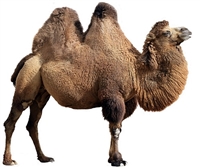 Camelicious Camel Burgers - 2 Lbs.
Camelicious Camel Burgers - 2 Lbs.
Exotic Meat Market offers Wild
Camel Meat imported from Australia. No Antibiotics. No Hormones.
This package contains eight (8) Camel Burgers. 4 oz.
each. Total Weight 2 Lbs. This is Certified Halal Camel Meat.
Camel Meat sound exotic, but camel meat is
national food and it’s popular in the whole Gulf. Camel tastes delicious. At
times, Camel Rib Eye steak is highly marbled like Wagyu Rib Eye steak. Camel
meat is more tender when the camel is slaughtered at a young age. Camel Milk is
healthy as it contains less cholesterol and more beneficial minerals than
ordinary cow's milk. Exotic Meat Market offers Camel Meat imported from
Australia. Camel is Halal slaughtered in Australia.

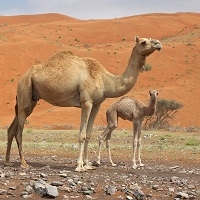 Camelicious Camel Ground Meat - 2 Lbs.
Camelicious Camel Ground Meat - 2 Lbs.
Exotic Meat Market offers Wild Camel Meat imported from Australia. No Antibiotics. No Hormones. Our Camel Ground Meat is delicious, and full of flavor. This package contains two pounds of Camel Ground Meat. Camel Meat sound exotic, but camel meat is national food and it’s popular in the whole Gulf. Camel tastes delicious. Camel meat is more tender when the camel is slaughtered at a young age. Camel Milk is healthy as it contains less cholesterol and more beneficial minerals than ordinary cow's milk. Exotic Meat Market offers Camel Meat imported from Australia. Camel is Halal slaughtered in Australia.
Your search for camel ground meat, buy camel ground meat, camel ground meat price, camel ground meat near me, how to cook camel ground meat, camel ground meat online, camel ground meat recipe, taste of camel ground meat, camel ground meat nutrition, Fresh camel ground meat, frozen camel ground meat, camel ground meat distributor, camel ground meat importer and more ends here.

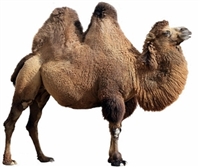 Camelicious Camel Hot Dogs - 8 Hot Dogs - Total Weight 2 Lbs.
Camelicious Camel Hot Dogs - 8 Hot Dogs - Total Weight 2 Lbs.
Our precooked Camel Hot Dogs can be boiled, fried,
grilled, or roasted in the oven. Dress it up with a classic combination of
mustard and ketchup, or get more creative by adding onions, relish, and a
variety of other toppings. Two Packages Per Order. Each package weighs 16 oz.
Minimum 4 Camel Hot Dogs per package. Average length of Camel Hot Dog is 5 to 6
inches. Grilling Camel Hot Dogs results in a pleasant
smoky taste and many consider this to be the best way to prepare them. Any sort
of grill will work, so go ahead and light your charcoal, gas, or wood-fired
grill. While the grill is heating up, prepare the Camel hot dog buns and
condiments. Camel Hot dogs are best enjoyed hot from the grill. Make sure that
one side of the grill is hot, and one side of the grill is a little cooler. You
can do this by stacking up the charcoal a little higher on one side. If you
have a gas grill, you should be able to control the heat using the knobs on
your appliance to make Camel hot dogs good. Lay the Camel hot dogs on the
cooler side of the grill. Place them at an angle to create a diagonal sear-mark
on the Camel dog. Cook the Camel hot dogs for a minute on each side. Camel Hot
dogs come already cooked, so your goal here isn't to cook the Camel dog so much
as give it some good color and get it piping hot without burning it. Keep
turning the Camel dogs until all sides have developed a nice, even char. If the
Camel dogs are hot but have not developed color, move them over to the hot side
of the grill. Grill them quickly, just to develop a bit of char, and then move
them to a plate. Place them in a bun and serve with any combination of mustard,
ketchup, relish, onion, tomato, cheese, or sauerkraut. Boiling Camel Hot Dogs is easy. Fill a large
saucepan with enough water to cover Camel hot dogs easily. For 4 Camel hot
dogs, 4 cups (about 1 liter) of water should be more than enough. Be sure to
use a pan large enough so that the water falls at least a few inches below the
rim. Bring the water to boil. Place the pan on a burner and turn the heat to
high. Let the water come to a full boil before proceeding. Add the Camel hot
dogs to the water. Once the water is boiling, slip in the Camel hot dogs one by
one with tongs. Simmer the Camel hot dogs. Turn the burner down to its low
setting and simmer Camel hot dogs for anywhere from 3 to 6 minutes, depending
on how you like your Camel hot dogs cooked. For a moister, softer Camel hot
dog, simmer them for less time, around 3 to 4 minutes. For a crispier Camel hot
dog, simmer them for more time, around 5 to 6 minutes. Remove the Camel hot
dogs and serve. After the Camel hot dogs are finished boiling, remove them from
water and dry them off carefully with a paper towel before placing them in a
bun. Serve the Camel hot dogs with any combination of mustard, ketchup, relish,
onion, tomato, cheese, or sauerkraut. Microwaving Camel Hot Dogs. Place Camel hot dogs
in a microwave-safe bowl. Use plastic or glass, rather than a metal bowl. Make
sure the bowl is deep enough to hold the Camel hot dogs comfortably. Cover the Camel
hot dogs with water. It may boil over the sides, so try to leave an inch or so
between the top of the water and the rim. Cook the hot dog. Place the bowl in
the microwave. Close the door, and then cook the Camel hot dogs on high for 2
to 3 minutes. Remove the Camel hot dogs from the microwave and drain away the
water. Let the Camel hot dogs stand for 30 seconds to cool and dry off, since
they will be bursting with heat when they come out. Once the Camel hot dogs are
dry, put them in buns and serve them. This quick method of cooking Camel hot
dogs is conducive to serving with a simple mustard and ketchup combo for an
on-the-go meal. Oven-Roasting Camel Hot Dogs. Preheat the oven to
400° F (~204° C). This method of cooking Camel hot dog’s results in juicy,
blackened Camel hot dogs. They taste about as close as you can get to grilled Camel
hot dogs without the inconvenience of lighting up the grill. Make a lengthwise
slice down half of each Camel hot dog. Use a sharp knife and cut on a stable
surface, since Camel hot dogs can be slippery. Do not slice through the Camel
hot dogs themselves; just make a cut that will serve as a vent in the surface
of the Camel hot dogs. Place the Camel hot dogs on a baking tray or roasting
pan. The Camel hot dogs will drip as they release juices, so you may want to
line the pan with aluminum foil for easy clean up. Cook the Camel hot dogs for
15 minutes. Place the roasting pan in the oven and let the Camel hot dogs cook
until the skin begins to brown, and the Camel dogs begin to curl gently. Brown
the Camel hot dog by turning on the broiler if you prefer your Camel hot dogs
crispy. Add cheese and place the Camel hot dogs back in the oven for an
additional minute, if desired. Carefully take the Camel hot dogs out of the
oven and place them on buns. Oven-roasted Camel hot dogs pair wonderfully with chili
and cheese. Scoop chili on top and sprinkle on some cheese, and then serve the Camel
hot dogs with forks. Frying Camel Hot Dogs. Cut up some Camel hot dogs.
You can fry whole Camel hot dogs, but they taste most excellent when they're
cut into bite-sized pieces. That way, more surface area gets a crispy brown
sear. Take two or three Camel hot dogs - depending on how many you want - and
cut them into smaller pieces you can fry. Heat some oil in a frying pan. Place
the pan on the stove and turn the heat to medium high. Add enough oil to rise
the sides of the frying pan by about 1/4 - 1/2 inch (.6 - 1.3 cm). Let the oil
heat up completely. To test whether it's ready for the Camel hot dogs, drop a
crumb of bread into the hot oil. If it immediately starts sizzling and
sputtering, the oil is ready. Place the Camel hot dog pieces in the frying pan.
Do this carefully, since they may sizzle and pop right away. Put them all in
the pan in a single layer and let them start to fry. Try not to overcrowd the
frying pan, since this will cause the Camel hot dogs to cook unevenly. Turn the
Camel hot dog pieces. Use tongs to carefully turn them over after a minute or
two, when the first side has become brown and crispy. Keep frying the Camel hot
dog pieces for another minute or two, until they're cooked just the way you
like them. Remember that Camel hot dogs are pre-cooked, so you can cook them to
any texture you like without worrying about whether they're still raw in the
middle. Drain the Camel hot dog pieces. Use the tongs to transfer them to a
paper-towel-lined plate so the oil can drain off and the Camel hot dogs can
cool a bit. Camel Hot Dogs are delicious with fried peppers and onions, mixed
into macaroni and cheese, or on their own with some ketchup and mustard.
Looking for Anshu’s Camel Hot Dogs, Buy Camel Hot
Dogs, Purchase Camel Hot Dogs, Camel Hot Dogs online, where can I buy Camel Hot
Dogs, Camel hot dogs for sale, hot dogs, hotdogs, Camel meat, Camel hot dogs
brands, Camel hot dogs recipes, what are Camel hot dogs made of, how to cook Camel
hot dogs, Camel hot dogs ingredients, Camel hot dogs cancer, Camel hot dogs
prices and Camel hot dogs history?

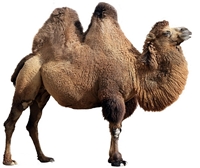 Camelicious Camel Rib Eye Steaks - 2 Steaks - 8 oz. each
Camelicious Camel Rib Eye Steaks - 2 Steaks - 8 oz. each
Exotic Meat Market offers Wild Camel Meat imported from Australia. No Antibiotics. No Hormones. Our Camel Rib Eye Steaks are tender, juicy, delicious, and full of flavor. This package contains two Camel Rib Eye Steaks. 8 oz. each. Camel Meat sound exotic, but camel meat is national food and it’s popular in the whole Gulf. Camel tastes delicious. Camel meat is more tender when the camel is slaughtered at a young age. Camel Milk is healthy as it contains less cholesterol and more beneficial minerals than ordinary cow's milk. Exotic Meat Market offers Camel Meat imported from Australia. Camel is Halal slaughtered in Australia.

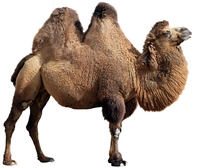 Camelicious Camel Salami 16 Oz.
Camelicious Camel Salami 16 Oz.
Exotic Meat Market offers CAMEL Salami made from Australian Camel Meat. No Beef or Pork Added to make our Camel Salami.
What is Salami? Salami is a type of cured sausage consisting of fermented and air-dried meat, typically beef or pork. Historically, salami was popular among southern and central European peasants because it stores at room temperature for up to 40 days once cut, supplementing a potentially meager or inconsistent supply of fresh meat. Countries and regions across Europe make their own traditional varieties of salami.
The word salami in English comes from the plural form of the Italian salame. It is a singular or plural word in English for cured meats of a European (particularly Italian) style. In Romanian, Bulgarian, and Turkish, the word is salam; in Hungarian, it is szalámi; while Spanish, French, German, and Dutch, have the same word as English. The name may be derived from the Latin words "salsiccia" and "salumen". The word originates from the word sale (salt) with a termination (ame) that in Italian indicates a collective noun. Thus, it originally meant "all kinds of salted (meats)". The Italian tradition of cured meats includes several styles, and the word salame soon specifically meant only the most popular kind—a salted and spiced meat, ground and extruded into an elongated, thin casing (usually cleaned animal intestine), then left to undergo natural fermentation for days, months, or even years.
The concept of fermentation—allowing beneficial or benign organisms to grow in food to prevent destructive or toxic ones from growing—especially with meat, has been around for thousands of years. This is evident in the presence of various types of sausages found globally. As well, environmental conditions dictate what food processes are used, as seen in the Mediterranean and southern Europe where "meat products are dried to lower water activity (Aw) values, taking advantage of the long dry and sunny days, while in northern Europe, fermented sausages require smoking for further preservation. In Europe, the main countries that produce salami are France, Germany, Hungary, Italy, and Spain, which make "several of hundred million kg per year.
Worldwide, there are many different versions of sausage, each with its own cultural and flavor profiles. Additionally, each sausage has its own type of seasonings and amount of salt, making each flavor and texture unique. This wide array of fermented sausages, especially in terms of salami, shows its ubiquitous but exclusive nature. For example, due to immigration to North America, European settlers brought many traditions, including fermented meats such as bologna or pepperoni. Similar types of sausages are found in the Middle East, where various meats like beef, lamb, and mutton are used; or in China, where "lap cheong" (translated as "waxed intestines") are usually pork. Likewise, in eastern Europe, Hungarian salami is quite popular. Hungarian salami is "intensively smoked, and then its surface is inoculated with mold starters or spontaneous mold growth.
Traditional salami, with its typical marbled appearance, is made from beef or pork (sometimes specifically veal). Beef is usual in halal and kosher salami, which never include pork for religious reasons. Makers also use other meats, including venison and poultry (mostly turkey). Goose salami is traditional in parts of Northern Italy. Salami has also been made from horse meat. In the Provence region of France, donkey meat is used for salami as well, the product being sold in street markets. Typical additional ingredients include:
Garlic Minced fat Salt Spices, usually white pepper Various herbs Vinegar Wine
The maker usually ferments the raw meat mixture for a day, then stuffs it into either an edible natural or inedible cellulose casing, and hangs it up to cure. Some recipes apply heat to about 40 °C (104 °F) to accelerate fermentation and drying. Higher temperatures (about 60 °C (140 °F)) stop the fermentation when the salami reaches the desired pH, but the product is not fully cooked (75 °C (167 °F) or higher). Makers often treat the casings with an edible mold (Penicillium) culture. The mold imparts flavor, helps the drying process, and helps prevent spoilage during curing.
Salami varieties include:
Cacciatore (cacciatora, cacciatorini) "hunter" salami, Italy Chorizo, also spicy Iberian variant Ciauscolo, typical of Marche Fegatelli Felino, province of Parma Finocchiona, typical of southern Tuscany Genovese German salami Hard Kulen spicy salami characteristic for Slavonia, Vojvodina, and parts of Baranya Lardo Napoletano, Napoli Milanese, Milano 'Nduja Pepperoni Saucisson sec (French "dry sausage") Soppressata, typical of Calabria Spegepølse (Danish, means salted and dried sausage) Vysočina Winter salami (Hungarian téliszalámi)
Many Old World salami are named after their region or country of origin—such as Arles, Genoa, Hungarian, and Milano salami. Many are flavored with garlic. Some types—including some varieties from Spain (salchichón), Hungary (pick salami), and Italy (such as Neapolitan varieties that led to American pepperoni) include paprika or chili powder. Varieties also differ by coarseness or fineness of the chopped meat and size and style of the casing.
Though completely uncooked, salami is not raw, but cured. Salame cotto—typical of the Piedmont region in Italy—is cooked or smoked before or after curing to impart a specific flavor but not for any benefit of cooking. Before cooking, a cotto salame is considered raw and not ready to eat. Three major stages are involved in the production of salami: preparation of raw materials, fermentation and ripening and drying. Any minor differences in the formulation of the meat or production techniques could give rise to the various kinds of salami across different countries.
Before fermentation, raw meat (usually pork or beef depending on the type of salami that is produced) is milled and mixed with other ingredients such as salt, sugar, spices, and yeast, and, if the particular salami variety requires it, bacterial starter culture. They are then inlaid into their casings with the desired size. To achieve the flavor and texture that salami possesses, fermentation, which can also be referred to as a slow acidification process promoting a series of chemical reactions in the meat, has to take place. Direct acidification of meat was found to be inappropriate for salami production since it causes protein denaturation and an uneven coagulation thereby causing an undesirable texture in the salami. For a more modern controlled fermentation, makers hang the salami in warm humid conditions for one to three days to encourage the fermenting bacteria to grow, then hang it in a cool, humid environment to slowly dry. In a traditional process, the maker skips the fermentation step and immediately hangs the salami in a cool, humid curing environment. Added sugars (usually dextrose) provide a food source for the curing bacteria.
The bacteria produce lactic acid as a waste product, which lowers the pH and coagulates the proteins, reducing the meat's water-holding capacity. The bacteria-produced acid makes the meat an inhospitable environment for pathogenic bacteria and imparts a tangy flavor that distinguishes salami from machine-dried pork. Salami flavor relies as much on how these bacteria are cultivated as it does on the quality and variety of the other ingredients. Originally, makers introduced wine into the mix, favoring the growth of other beneficial bacteria. Now, they use starter cultures.
The climate of the curing environment and casing size and style determine the drying and curing process. According to the variety of salami, different fermentation methods involving different acids are explored in order to create various colors and flavors. Starter cultures such as lactic acid bacteria (LAB) and coagulase-negative cocci (CNC) are most commonly used in salami production. More species of LAB and CNC were discovered during the last decades and they were found to have different fermentation temperatures with variable rates of acidification. Even though these bacteria can help maintain a longer shelf life for meat products and even retard the growth of pathogens, there are a few studies that argue some starter cultures may be related to the production of enterotoxins or biogenic amines that can be harmful to the human body. Therefore, starter cultures have to be carefully selected by producers and properly used in fermentation.
After fermentation, the sausage must be dried. This change the casings from water-permeable to reasonably airtight. A white covering of either mold or flour helps prevent photo-oxidation of the meat and rancidity in the fat. Ripening and drying happens after fermentation. This stage causes the main physical and microbial changes through the large amount of water loss. About half of the water is evaporated and further water loss must be prevented by packaging. Nonuniform drying processes could cause the formation of a hard shell on the surface of salami. This is like other food products such as fruits that undergo dehydration to prevent water removal from inside which would increase the risk of diseases or spoilage-causing microbial growth. In modern manufacturing temperature and relative humidity are strictly controlled according to the size of salami. Nitrates or nitrites are added to provide the cured meat color and inhibit growth of harmful bacteria from the genus Clostridium. Salt, acidity, nitrate/nitrite levels, and dryness of the fully cured salami combine to make the uncooked meat safe to consume. High quality, fresh ingredients are important to helping prevent deadly microorganisms and toxins from developing.
Salami is homogeneous in appearance and highly ductile. Its quality is dependent on the quality of the raw materials and the level of technology used in its production. The aroma and taste of salami are developed by enzymatic and non-enzymatic reactions. The characteristic fermented meat flavor is believed to be developed by a combination of endogenous enzymatic activities and the lactic acid produced by the starter culture. Lactic acid bacteria develop the tangy flavor of salami through the fermentation of carbohydrates and produces an appealing red color to the meat after fermentation, while coagulase-negative cocci can catabolize amino acid and fatty acid to produce volatile compounds. The flavor itself consists of odor properties, which comes from volatile substances, and taste and tactile properties, which comes from non-volatile substances that are a result of enhancers and synergists.
When smoke is applied to salami, it also affects the taste, smell, appearance, and texture. Some of these changes are due to the formation of phenolic compounds, which slow fat oxidation. The pyrolysis of cellulose and hemicelluloses in the salami casing produces carbonyls, which develop the color of the meat.
More than 400 volatile compounds have been identified in different types of dry-fermented sausages. For example, the organic compounds identified in Hungarian salami produced the dominant flavors of smokiness, sweetness, pungency, sourness, and cloves; secondary flavors included cooked meat, cheese, popcorn, cooked potato, mushroom, seasoning, phenols, roasting, sulfur, and sweatiness. Some minor flavors included malt, garlic, fruit, pine, grass, citrus, honey, caramel, and vanilla. The overall smoky note is the result of numerous phenols. Whether these odorants are formed in the salami or simply transferred from the raw materials during manufacturing is unknown; systematic studies have yet to compare the odorants present in the raw materials to those in the final product.
Salami will remain stable for long periods of time, as it has a low water activity and contains preservatives, colorings, flavorings, antioxidants and acidifying cultures. Semi-ripened salami will maintain its flavor for long periods of time under retail display conditions, but it will eventually deteriorate due to the development of incipient rancidity. The shelf life of salami is mainly determined by sensory deterioration, which is the result of various oxidation phenomena; pathogenic or spoilage bacteria do not readily proliferate in dry-cured sausage. The main cause of flavor deterioration in dry-cured sausage is rancidity, though the possible formation of other off-flavors, such as moldy, acid, putrid or pungent traits, may contribute to the decreased eating quality.
The use of coriander essential oil in salami has been shown to increase the higher synthetic antioxidant effect of butylated hydroxytoluene, which delays lipid oxidation and the rancid aroma and taste that come with it. Additionally, salami with coriander essential oil shows improvements in the sensory attributes of taste, odor, texture, brightness, and red color intensity.
Salami is a raw fermented sausage consisting of raw comminuted pork and/or beef meat, fat, and additives, such as curing salt, spices, sugar, and a starter culture. There are multiple different types of Salami meat in various markets around the world. In northern and central Europe, smoked salamis are preferred, and ripening is controlled by the addition of lactic acid-producing starter cultures, whereas in southern Europe, salami is slowly air-dried and mostly mold-ripened.[20] Therefore, different preservation and drying methods are used around the world to prepare salami.
Hungarian-type salami is a specialty in salami production, because it is first slightly smoked and mold-ripened afterward. The salami that is of Hungarian origin, the so-called "Hungarian Winter salami", is made of raw pork, bacon, salt, spices, sugars, and sodium nitrite. Szegedi téliszalámi (winter salami) is made of Mangalitsa pork breed, with horse large intestine used as its casing to preserve and serve it. This type acquires a grey mold cover on it and has a firm texture and excellent keeping quality after a 30% weight loss reached in 3 to 4 months. Hungarian salami is one of the world's two trade names for salami, Milano salami being the other. These fermented sausages combine smoke and mold application in one. The traditional technology used to produce them is based on the Italian pre-drying technique developed during the nineteenth century, but they are smoked and their pH does not drop below 5.5, so the final flavor of the product is not acidic.
Dry fermented sausage is an important product of the Greek meat industry with an annual production of about 10 000 tons. Its manufacture varies depending on the skill and experience of the meat manufacturer rather than a process solely based on scientific and technological means of production. This type of traditional sausage, which undergoes an adventitious fermentation, is of superior quality compared to those inoculated with starters and made in industrial scale. The quality of this type of traditional salami is often more expensive due to its high quality.
Naples-type salami is also a popular Southern Italian dry fermented sausage made of coarsely minced pork meat. In Northeast Italy, traditional dry fermented salami sausages made of fresh pork display unique organoleptic sensory profiles characterized by accented acidity, slight sourness, and elastic semi hard consistency. Other popular dry salamis in Italy are mainly made from a combination of pork and small bits of beef, seasoned with garlic; pepperoni is also made of pork and beef, and is usually smoked; and chorizo is highly spiced and smoked in comparison.
In central Europe, Germany, there is Westphalian salami. It is made with fast technology from pork meat, pepper, garlic, and sometimes mustard seeds, is a smoked, firm, sliceable product with a distinct fermentation/sour flavor. The sausages are stuffed into large-diameter casings and ripened by lowering the temperature room 24 °C to 12–14 °C until a water loss of 25% is obtained. In the Netherlands, the most popular Dutch products are finely chopped salami, Cervelat, Snijworst (with high fat content and rind added), Boerenmetworst (which is coarsely chopped), and chorizo (which is less spicy than the Spanish product). In Russia, typical products are Moscow-type and Russian-type salamis made from pork and beef meat. A feature of Moscow- type salami is the large size of fat particles (7–8mm) that give the sausage a rough cover.
There are many aspects of salami that can be considered both detrimental and positive to human health. Salami has been found to be a possible allergen to some people due to the use of penicillium species mold starter during the drying and curing portion of processing to add flavor and stop growth of undesirable molds. These molds occur predominantly in the skin of salami. Fermented pork back fat that is used to make salami has very high saturated fatty acid and cholesterol content, which can increase the risk of heart disease and pancreatitis. However, it has been shown that it is possible to replace the pork back fat in salami with extra virgin olive oil thereby changing the fatty acid profile of the salami. Olive oil consists of a much larger amount of monounsaturated and polyunsaturated fatty acids, which allows this substitution to create a healthier product. Salami is considered slightly acidic due to lactic acid that is present. In salami where the pork back fat was substituted for extra virgin olive oil, it has shown to have a lower pH of around 5.00 compared to its original levels of around 6.35 to 6.55 making the salami more acidic. These lower pH levels are healthier for humans as higher populations of lactic acid bacteria inhibit the spread of spoilage microorganisms.
There have also been cases that have highlighted some of the possible health dangers of salami. An outbreak of Escherichia coli O157 infection of a husband and wife was traced back to the consumption of dry fermented salami made with pork meat after the couple was hospitalized for bloody diarrhea. There was also an outbreak of E. coli O157 in 1994 with 17 cases all occurring from the consumption of pre-sliced salami that was processed by one company. A research investigation of the factory where the salami was processed found that all processing techniques and production methods complied with all regulations and there was no evidence of contamination after processing.
Preservation of any meat products is important. Some fungi can create undesirable color and flavor to the contaminated meat and produce toxins. There are also fungi which are not harmful to humans such as those that are formed on the surface of dried salami which are an indication of maturation after ripening. Thus, producers have to eliminate fungi that have potential risks to human health. As natural preservatives are becoming more desirable food additives than artificial preservatives in food industries, some studies about salami have been focusing on the utilization of essential oils such as oregano and clove oil as preservatives that can be applied to salami production due to their anti-fungal activities.[29] Several types of oils including rosemary, clove, oregano and sage oils were found to have different levels of inhibition effect to various types of fungi that could possibly grow on salami. Since several of these oils contain volatile compounds whose amount can affect the flavor of the food, researchers often perform a sensory test to find the amount of the oil that can best serve as an anti-fungal preservative but have the least effect on the flavor or appearance of the salami.

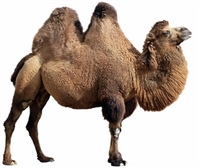 Camelicious Camel Sausages - 2 Lbs.
Camelicious Camel Sausages - 2 Lbs.
Our Camelicious Camel Cajun Sausage is made exclusively from Camel Meat, Camel Fat and Camel Milk Powder. All our Camelicious Sausages are 100% Halal. No Beef. No Pork. Laissez les bons temps rouler! Add some gourmet Cajun kick to your jambalaya, gumbo or even a plain old bun. The lean Camel Meat is double smoked for deep, rich flavor and our special Creole spice blend welcomes the taste of Louisiana to your plate. Fully Cooked. Ready to heat and serve. Camel Meat tastes Delicious. I call it Camelicious!.....Anshu Pathak

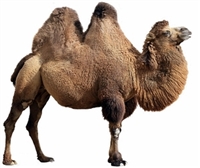 Camelicious Camel Andouille Sausage - 2 Lbs.
Camelicious Camel Andouille Sausage - 2 Lbs.
Our Camelicious Camel Andouille is a coarse-grained smoked sausage made using camel meat, camel hump fat, camel milk powder, garlic, pepper, onions, wine, cilantro, and our secret seasonings. The Camel Meat used is mostly from a smoked shoulder roast. Once the casing is stuffed, the sausage is smoked again (double smoked). Though somewhat similar, andouille is not to be confused with "hot links" or similar finely ground, high-fat, heavily peppered sausages. In France, particularly Brittany, the traditional ingredients of andouille are primarily pig chitterlings, tripe, onions, wine, and seasoning. It is generally grey in color and has a distinctive odor. Also, a similar sausage is available called andouillette, literally "little andouille." This package includes 2 Lbs. of Camel Andouille Sausage - 8 Links. Each link weighs 4 Oz. Each. $ 19.99 Per Lb. Looking for Camel Andouille Double Smoked Sausage, Camel sausage, Buy Camel sausage, Camel sausage for sale, Camel sausage on line, Camel sausage cheap, Where can I buy Camel sausage, Where can I purchase Camel sausage, Louisiana Camel sausage, Cajun Camel sausage, spicy Camel sausage, hot Camel sausage, Italian Camel sausage, Camel sausage with garlic and herbs, Camel sausage with garlic and basil and more?

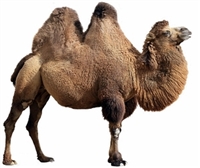 Camelicious Camel Sausage with Italian Spices
Camelicious Camel Sausage with Italian Spices
Our Italian Camelicious Camel Sausage is made exclusively from Camel Meat, Camel Fat and Camel Milk Powder. All our Camelicious Sausages are 100% Halal. No Beef. No Pork. The lean Camel Meat is double smoked for deep, rich flavor and our special Italian spice blend welcomes the taste of Italy to your plate. Fully Cooked. Heat and serve. Camel Meat tastes Delicious. I call it Camelicious!.....Anshu Pathak

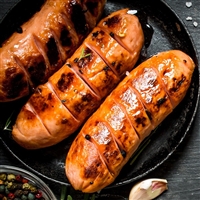 Kangaroo Sausage with Garlic and Basil - 2 Lbs.
Kangaroo Sausage with Garlic and Basil - 2 Lbs.
Our Kangaroo Sausage with Garlic and Basil is made from imported Kangaroo Meat from Australia . Camel Hump Fat is added for flavor. This package includes TWO POUND of Kangaroo Sausage. Kangaroo has been historically a source of food for indigenous Australians. Kangaroo meat is high in protein and low in fat (about 2%). Kangaroo meat has a very high concentration of conjugated linoleic acid (CLA) when compared with other foods. CLA has been attributed with a wide range of health benefits including anti-carcinogenic and anti-diabetes properties, in addition to reducing obesity and atherosclerosis. Kangaroo meat is stronger in flavor than the meat from commercially-raised food animals. It is considered to be tender. Minced kangaroo meat may be substituted in dishes where minced beef would normally be used.PORK FREE SAUSAGE.

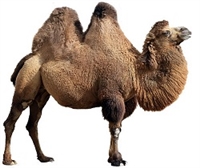 Camelicious Camel Hump Fat - 2 Lbs.
Camelicious Camel Hump Fat - 2 Lbs.
Exotic Meat Market offers Wild Camel Meat imported
from Australia. No Antibiotics. No Hormones. Camel hump is a
food reserve. When food is scarce, the fat in the hump is degraded and used for
nutrition. Our Camel Hump Fat is delicious, and
full of flavor. This package contains two pounds of Camel Hump Fat.
Hump Fat contains Conjugated Linoleic Acid (CLA),
Arachidonic acid, Caprice acid, Lauric Acid, Stearic Acid, Palmitoleic Acid,
Beta Carotene, plus vitamins A, E, K, B12, and Biotin. And there’s three times
more Oleic acid (Omega 9) than in coconut oil. Hump Fat has 40% of your daily
Vitamin B12 in a single tablespoon! No other fat or cooking oil offers this
level of bioavailable nutrients.

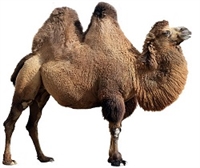 Camelicious Camel Bratwurst Sausage - 2 Lbs.
Camelicious Camel Bratwurst Sausage - 2 Lbs.
Our Camel Brätwurst Sausage is made exclusively
from Australian Wild Camel Meat and Camel Fat. Our Camel Brätwurst Sausage is
100% Halal. No Beef. No Pork. Each package Weighs approximately one Lb. 4 Links
Per Package. Each Link weighs 4 oz. or more. Our Camel Brätwurst Sausage is smoked. Fully
Cooked. Ready to heat and serve. In Old German language, Brät = finely chopped
meat, and Wurst = Sausage. Camel Meat sound exotic, but camel meat is
national food and it’s popular in the whole Gulf. Camel tastes delicious. At
times, Camel Rib Eye steak is highly marbled like Wagyu Rib Eye steak. Camel
meat is more tender when the camel is slaughtered at a young age. Camel Milk is
healthy as it contains less cholesterol and more beneficial minerals than
ordinary cow's milk. Exotic Meat Market offers Camel Meat imported from
Australia. Camel is Halal slaughtered in Australia.
Looking for Camel Bratwurst Sausage, Buy Camel
Bratwurst Sausage, Where can I buy Camel Bratwurst Sausage, Purchase, Camel
Bratwurst Sausage, Camel Bratwurst Sausage online, Camel Bratwurst Sausage
price, Halal Camel Bratwurst Sausage, Halal Meat, Halal Sausage, Camel
Bratwurst Sausage taste, Camel Bratwurst Sausage near me, Camel Meat, Camel
Meat Nutrition, Camel Sausage, Bratwurst Sausage, for sale, on sale, search for
Camel Bratwurst Sausage on Google, Camel Bratwurst Sausage on Bing, Camel
Bratwurst Sausage on Amazon

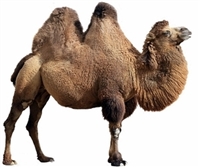 Camel Rendered Hump Fat - 16 Oz.
Camel Rendered Hump Fat - 16 Oz.
Exotic Meat Market renders Halal Camel Hump Fat in small
batches in the USA. Wild Camels are harvested Halal in Australia. Certified
Halal Camel Hump Fat is inspected by the United States Govt. Halal Camel Hump Fat contains Conjugated Linoleic Acid (CLA),
Arachidonic acid, Caprice acid, Lauric Acid, Stearic Acid, Palmitoleic Acid,
Beta Carotene, plus vitamins A, E, K, B12, and Biotin. And there is three times
more Oleic acid (Omega 9) than coconut oil. Camel Fat has 40% of your daily
Vitamin B12 in a single tablespoon! No other fat or cooking oil offers this
level of bioavailable nutrients. Camel Rendered Hump Fat is anti-aging. Camel Hump Fat
heals your skin and provides a youthful appearance. Camel Fat can reduce common
aging symptoms such as wrinkles and bags under the eyes. Camel Fat is naturally anti-inflammatory. Camel Fat
relieves sore or tight muscles, aches, pains, sprains, or inflamed joints.
Camel Fat helps with arthritis, rheumatism, and multiple sclerosis. Camel Fat contains healthy fatty acids like omega 3,
omega 6, and omega 9. These acids are the essential components of many skincare
products. Fatty acids support healthy cell membranes in our skin. Camel Fat rejuvenates the skin. The fatty acids in the
Oil promote the new growth of skin cells. Camel Fat is incredibly moisturizing.
Camel Fat penetrates the skin deeply, providing trustworthy, long-lasting
relief. Camel Fat includes carotenoids, flavones, polyphenols,
tocopherol, and phospholipids. These are all powerful antioxidant agents that
work to fight off free radicals in your body. Camel Fat supports the nervous, cardio, and immune
systems. Camel Fat help to regulate blood pressure, heart rate, and
inflammation. Omega fatty acids can also regulate metabolism and maintain our
reproductive system and function. Camel Fat also empowers our bodies to fight against
intruders such as infections. Camel Fat is hypoallergenic. This means it's
improbable to cause any type of allergic reaction. So even those with
hypersensitive skin will enjoy the benefits of Camel Fat. Camel Fat is also non-comedogenic, meaning that the Oil
won't block or clog your pores. This will prevent excessive breakouts of
pimples and acne. Camel Fat helps with skin disorders. Those with skin
conditions such as eczema or rosacea often struggle to find products that can
help. The rashy, red itch often persists no matter what type of products are
used. But due to the unique composition of Camel Fat, it can provide
much-needed relief to the itch, as well as reduce redness due to eczema. It may
even remedy the issue altogether. Those with sunburns, bug bites, blisters, or
minor cuts or scratches often reach for chemical-based products for relief. But
with Camel Fat, you can experience natural itch and pain relief, decreased
redness and swelling, and possibly faster healing times. Camel Fat may reduce the appearance of scars and other
skin issues, such as stretch marks and age spots. Camel Fat soothes cracked dry
feet. Nobody enjoys the feeling of dry, cracked feet as unpleasant as greasy or
sticky feet, which is often the result of other lotions or products. Camel Fat
provides deep, fast skin penetration in even the driest feet. Experience soft,
grease-free feet for the first time in a long time. Regular use can bring new
life into the skin on your toes and heels. Camel Fat can also support healthy-looking and feeling
hair, whether on your head or your face. The moisturizing properties can soothe
a dry scalp and prevent excess itching. To condition hair, simply massage a
small amount into the ends before bed. Wash as you normally would in the
morning for soft, smooth hair all day. As per the folk stories, Camel Fat may increase
the sexual ability of men and thus increases their libido and erection. Camel
Fat may narrow the vagina in women. Camel Fat may relieve and soothes the pain of
hemorrhoids. Camel Fat addresses disorders and bowel problems. Camel Fat
nourishes the hair from the root to the limbs, and thus strengthens and
increases its density and addresses various issues such as precipitation,
embrittlement, veneer, breakage, and baldness. Camel Fat increases weight;
therefore, it is suitable for people who want to improve their weight.
#CamelRenderedFat, #CamelRenderedFatforsale, #CamelRenderedFatnearme,
#CamelRenderedFatwholesale, #CamelRenderedFatretail, #CamelRenderedFatbenefits,
#CamelRenderedFatforMassage, #CamelRenderedFatforfood, #CamelRenderedFatforantiaging,
#CamelRenderedFatfattyacids, #CamelRenderedFatforhair, #ArtisanCamelRenderedFat,
#CamelRenderedFatvsEmuOil, #AmericanCamelRenderedFat, #BuyRenderedCamelFat, #CamelRenderedFatforhairgrowth,
#CamelRenderedFatforweightgain, #CamelRenderedFatvsOstrichOil, #HowisCamelRenderedFatmade,
#PureCamelRenderedFat, #AmericanCamelFarm, #AmericanCamelAssociation, #CamelRenderedFatlotion,
#CamelRenderedFatforskincare, #CamelRenderedFattohealburns, #CamelRenderedFatforpainrelief,
#whatisCamelRenderedFatusedfor, #whatarethebenefitsofCamelRenderedFat, #CamelRenderedhumpfatrecipe,
#CamelStewMeat, #CamelMeat, #HalalCamelMeatforsaleintheUSA, #HalalRenderedHumpFat,
#HalalCamelMeatforsaleinUSA

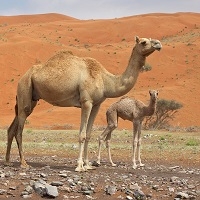 Camelicious Camel Steak Burgers - 2 Lbs.
Camelicious Camel Steak Burgers - 2 Lbs.
Exotic Meat Market offers Wild
Camel Meat imported from Australia. No Antibiotics. No Hormones.
This package contains eight (8) Camel Burgers. 4 oz.
each. Total Weight 2 Lbs. This is Certified Halal Camel Meat. Camel Steak Burgers are made from 100% Camel Strip Loin.
Camel Meat sounds exotic, but camel meat is
national food and it’s popular in the whole Gulf. Camel tastes delicious. At
times, Camel Rib Eye steak is highly marbled like Wagyu Rib Eye steak. Camel
meat is more tender when the camel is slaughtered at a young age. Camel Milk is
healthy as it contains less cholesterol and more beneficial minerals than
ordinary cow's milk. Exotic Meat Market offers Camel Meat imported from
Australia. Camel is Halal slaughtered in Australia.

 Heart of Axis Deer
Heart of Axis Deer
Axis Deer heart is rich in folate, iron, zinc, and
selenium. It is also a great source of vitamins B2, B6, and B12, all three of
which are in a group known as B-complex vitamins. B vitamins found in organ
meats have a cardioprotective effect, meaning they protect against heart
disease. B vitamins are also associated with maintaining healthy blood
pressure, reducing high cholesterol, and forming healthy blood vessels. They
are beneficial to the brain and have been found to reduce the risk of
Alzheimer’s disease, dementia, depression, and anxiety. Heart meat is also a
great source of coenzyme Q10 (CoQ10). This is an antioxidant and can help treat
and prevent certain diseases, particularly heart disease. CoQ10 has been shown
to slow down the aging process and to improve energy levels.
Exotic Meat Market offers Alligator heart, Alpaca
Heart, Antelope Heart, Axis Deer Heart, Bison Heart, Beaver Heart, Bobcat
Heart, Camel Heart, Coyote Heart, Duck heart, Emu Heart, Elk heart, Goose
heart, Goat Heart, Gemsbok heart, Lamb Heart, Llama Heart, Muskrat heart,
Nutria Heart, Ostrich heart, Oryx heart, Opossum heart, Otter heart, Partridge
heart, Peacock heart, Pheasant Heart, Rabbit heart, Raccoon heart, Reindeer
heart, Swan heart, Shark heart, Squirrel heart, Venison Heart, Wild Goose
heart, Wild Goat heart, Wild Boar Heart, Water Buffalo Heart, Yak heart, Zebra
Heart and more.

 Camel Jerky - Halal - 16 Oz. Free Shipping
Camel Jerky - Halal - 16 Oz. Free Shipping
Exotic Meat Market offers Camel Jerky. Our Camel Jerky
is made from Australian Wild Camel, which is slaughtered halal in Australia.
Our Camel Jerky is also made from Camel Shoulder Roast. Our Camel Meat does not
contain growth hormones and ships for free.
Are you looking for Camel Jerky, Camel Jerky near
me, Best Camel Jerky, Buy Camel Jerky, Camel Jerky online, Camel Jerky from
Exotic Meat Market, Taste of Camel Jerky, How to make Camel Jerky, Camel Jerky
from shoulder roast, Camel Jerky without hormones, Camel Jerky without
steroids, Camel Jerky on sale, buy Camel Jerky, Camel Jerky wholesale, American
Camel Jerky, Halal Camel Jerky, Halal Camel Meat, Australian Halal Camel Meat?
Your search ends here.

|
|